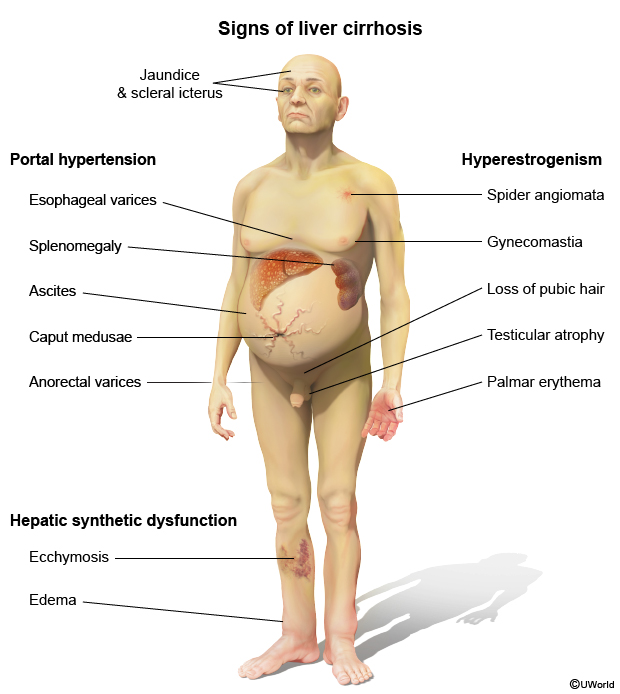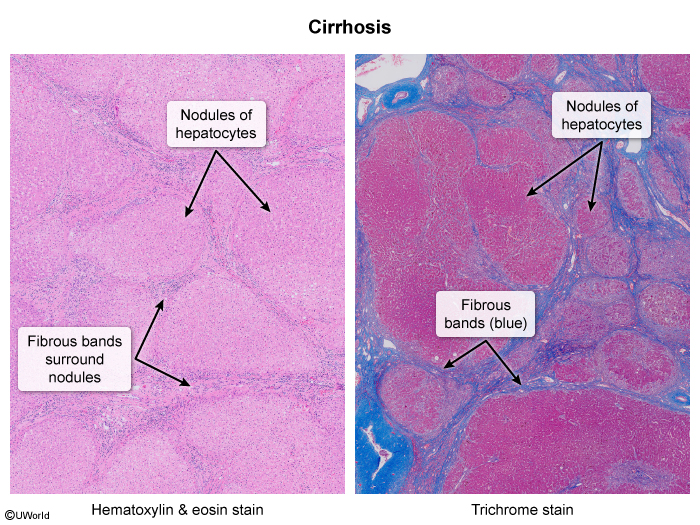Cirrhosis
Article Sections
Introduction
Cirrhosis represents the end stage of chronic liver disease, which is characterized by irreversible fibrosis and the formation of regenerative nodules that disrupt liver architecture and function. The pathogenesis involves chronic hepatocellular injury, leading to inflammation and fibrosis. Over time, normal liver parenchyma is replaced with scar tissue, which impairs blood flow through the liver, causing portal hypertension and reduced hepatic function. This progression results in significant alterations in the metabolism of various substances (eg, toxins, hormones, medications), impaired synthesis of proteins (eg, albumin, clotting factors, hormones), and numerous complications of portal hypertension.
Etiologies
Common causes of cirrhosis include:
- Chronic alcohol consumption
- Chronic viral hepatitis (hepatitis B and C, especially in the setting of intravenous drug use)
- Nonalcoholic fatty liver disease (aka metabolic dysfunction–associated steatotic liver disease)
Continue Learning with UWorld
Get the full Cirrhosis article plus rich visuals, real-world cases, and in-depth insights from medical experts, all available through the UWorld Medical Library.
Figures

Images
